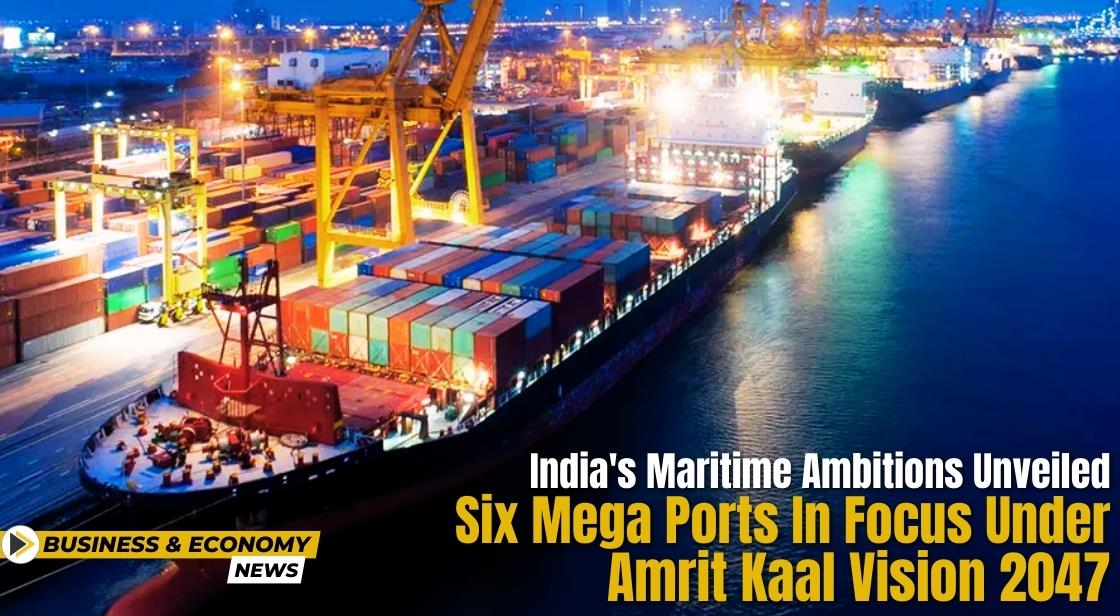India's Maritime Ambitions Unveiled: Six Mega Ports in Focus under Amrit Kaal Vision 2047

News Synopsis
India has unveiled an ambitious plan for maritime expansion, targeting the development of six mega ports by 2047, a key initiative under the Maritime Amrit Kaal Vision. The strategic port clusters identified for transformation are poised to significantly enhance the nation's cargo handling capacity, solidifying India's position in global trade.
Mega Ports Redefining India's Maritime Landscape
The Maritime Amrit Kaal Vision 2047 outlines two categories of mega ports based on cargo handling capacity. Those exceeding 500 Million Tonnes Per Annum (MTPA) include the Deendayal and Tuna Tekra Port Cluster and the Jawaharlal Nehru – Vadhavan Port Cluster. Ports with a capacity exceeding 300 MTPA consist of the Cochin – Vizhinjam Port Cluster, Galathea South Bay Port, Chennai – Kamarajar – Cuddalore Port Cluster, and the Paradip and Other Non-Major Ports Cluster.
From Vision to Reality: The Six Mega Port Clusters
The Maritime Amrit Kaal Vision identifies six key port clusters earmarked for transformation into mega ports by 2047:
Category 1: Mega Ports exceeding 500 Million Tonnes Per Annum (MTPA):
-
Deendayal and Tuna Tekra Port Cluster
-
Jawaharlal Nehru – Vadhavan Port Cluster
Category 2: Mega Ports exceeding 300 MTPA:
-
Cochin – Vizhinjam Port Cluster
-
Galathea South Bay Port
-
Chennai – Kamarajar – Cuddalore Port Cluster
-
Paradip and Other Non-Major Ports Cluster
Key Takeaways from the Mega Port Initiative
The government's foresight has identified six port clusters for transformation into mega ports by 2047, with a clear distinction based on cargo handling capacity. The initiative emphasizes a blend of Public-Private Partnership (PPP) models and internal funding to achieve infrastructure and capacity improvements. The anticipated impact includes a significant boost to maritime trade, streamlined cargo movement, and the creation of new employment opportunities.
Strategic Focus on Mega Ports
This ambitious maritime expansion initiative signifies a pivotal moment in India's maritime aspirations, positioning the country as a formidable force in global trade. The success of this project hinges on effective execution, attracting private investments, and ensuring sustainable development practices.
Understanding Amrit Kaal Vision 2047
Launched in 2023, Amrit Kaal Vision 2047 serves as a comprehensive development roadmap for India, envisioning the nation as a developed entity by its 100th year of independence. The maritime sub-vision within this grand plan specifically targets:
-
Expansion of Port Infrastructure: The development of six mega ports, exceeding 300 and 500 MTPA capacities, is a key focus.
-
Sustainable Growth: Emphasis on environmentally friendly practices and initiatives within the blue economy framework.
-
Technological Advancement: Encouraging investments in research and development to propel advanced maritime technologies.
-
Enhanced Connectivity: Developing robust port infrastructure and trade corridors to fortify global connections.
-
Skilled Workforce: Implementation of training and skill development programs to meet the evolving needs of the maritime sector.
Conclusion: A Voyage Towards Maritime Leadership
India's six mega port plan marks a significant step towards realizing its maritime aspirations. By navigating the challenges and capitalizing on the opportunities, this vision has the potential to transform India into a leading maritime power, shaping the future of global trade and positioning itself as a key player in the blue economy.
You May Like









